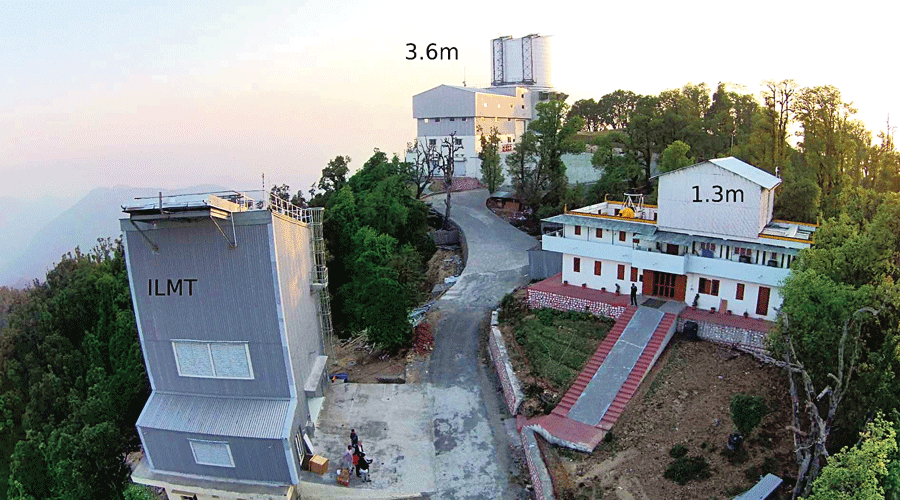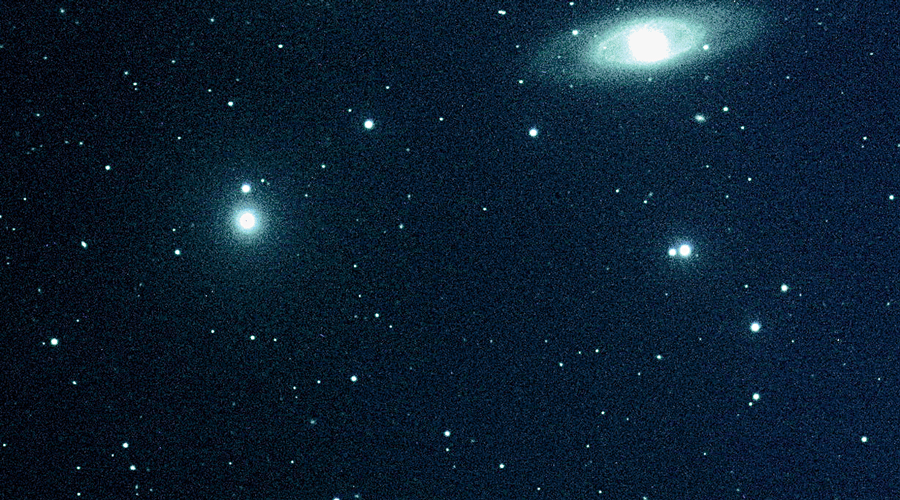An international telescope in the Himalaya, India’s largest optical telescope and the first with a liquid mirror, has opened for observations of diverse targets — from asteroids in the solar system to exploding stars to distant galaxies.
Astronomers from Belgium, Canada and India built and installed the instrument at the Devasthal campus of the Nainital-based Aryabhatta Research Institute of Observational Sciences (ARIES), about 2,450 metres above sea level.
The International Liquid Mirror Telescope (ILMT) uses a four-metre diameter rotating mirror made of a thin film of liquid mercury to collect and focus light, scientists at the institute said. This makes it larger than the 3.6-metre optical telescope also at Devasthal, hitherto the largest in the country.
“The ILMT is now the largest but it comes with a disadvantage and several advantages because it uses a liquid mirror instead of a conventional mirror,” Dipankar Banerjee, the Institute’s director told The Telegraph.

The Devasthal campus. The Telegraph
Since the liquid mirror is a rotating thin film of mercury, Banerjee said, the telescope cannot be pointed at will anywhere in the sky but will always observe the same part of the sky, the zenith as observed from Devasthal.
Such telescopes depend on the Earth’s rotation to observe different sections of the sky. As the Earth turns and the telescope returns to the same section of the sky, astronomers could use it to track the same set of objects each night.
“Because it is a large telescope, it will allow us to detect faint objects and because we return to the same objects every night, it will allow us to pick changes in brightness or other features,” Banerjee said.
The ILMT collaboration includes astronomers from the Nainital observatory and the University of Liege and Royal Observatory in Belgium, five universities in Canada, and academic institutions in Poland and Uzbekistan.
“The telescope has just become operational and we’re now fine-tuning the performance,” said Kuntal Misra, project investigator for ILMT at the Institute. “The way it works allows us to survey a strip of the sky each night. Our plan is to make the data from the sky survey available to the global astronomy community,” she said.
Since the ILMT became operational on April 29, astronomers have captured several hundred images of the sky on clear nights at Devasthal. The institute released an image showing two galaxies and stars in the foreground to the media on Thursday.
Liquid mirror telescopes take advantage of the fact that the surface of a rotating liquid has a parabolic shape which is ideal for focusing light. The reflected light passes through a sophisticated multi-lens optical corrector that produces sharp images over a field of view.










